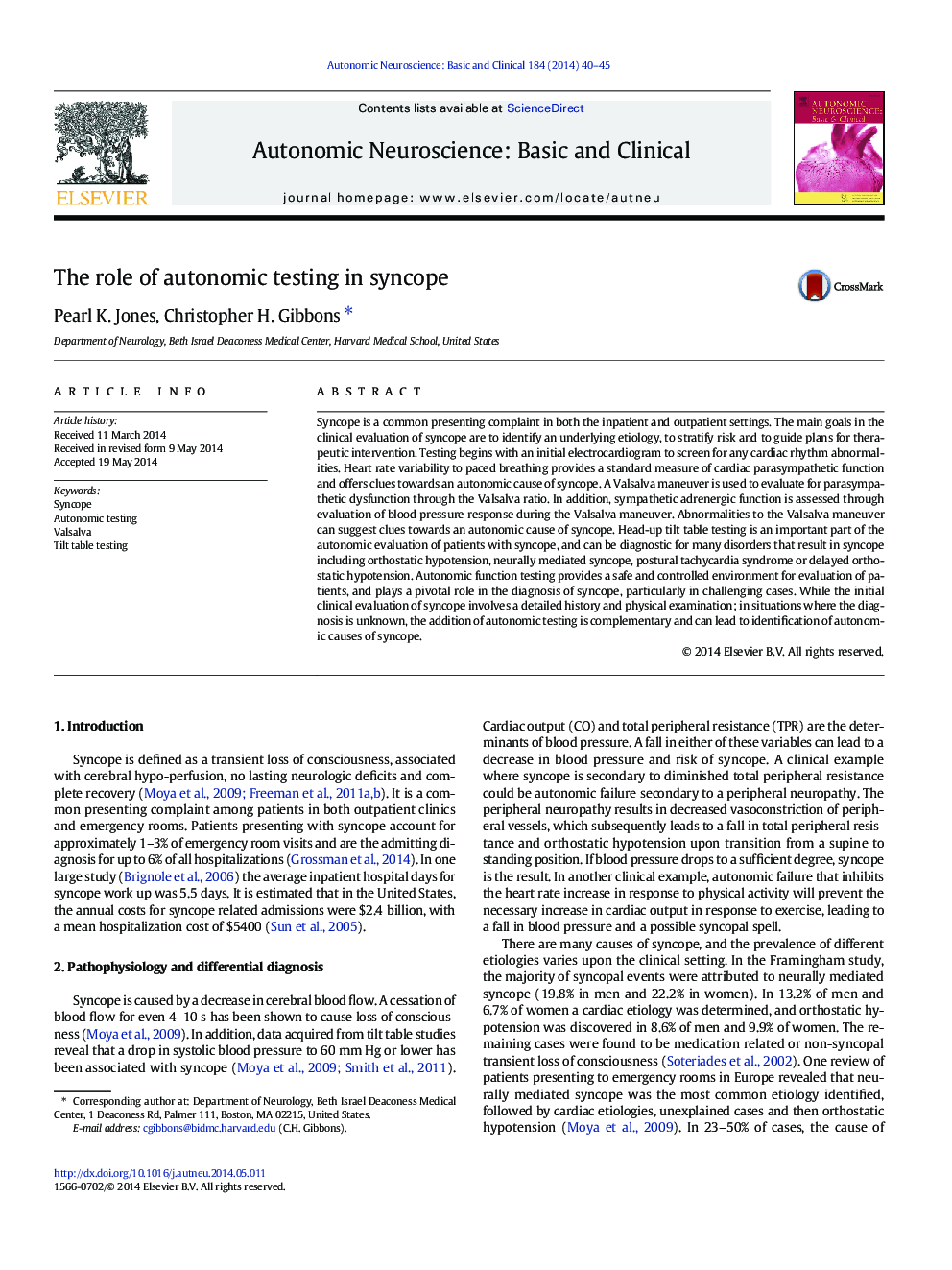| کد مقاله | کد نشریه | سال انتشار | مقاله انگلیسی | نسخه تمام متن |
|---|---|---|---|---|
| 3034639 | 1579531 | 2014 | 6 صفحه PDF | دانلود رایگان |
• Syncope frequently results in expensive medical evaluation and hospitalization.
• Autonomic testing can determine the cause of syncope in ~28% of cases.
• Neurally mediated syncope, POTS and orthostatic hypotension are common diagnoses.
• Therapeutic interventions can target the underlying disorders, improving outcomes.
• Autonomic testing is a necessary part of the evaluation for syncope.
Syncope is a common presenting complaint in both the inpatient and outpatient settings. The main goals in the clinical evaluation of syncope are to identify an underlying etiology, to stratify risk and to guide plans for therapeutic intervention. Testing begins with an initial electrocardiogram to screen for any cardiac rhythm abnormalities. Heart rate variability to paced breathing provides a standard measure of cardiac parasympathetic function and offers clues towards an autonomic cause of syncope. A Valsalva maneuver is used to evaluate for parasympathetic dysfunction through the Valsalva ratio. In addition, sympathetic adrenergic function is assessed through evaluation of blood pressure response during the Valsalva maneuver. Abnormalities to the Valsalva maneuver can suggest clues towards an autonomic cause of syncope. Head-up tilt table testing is an important part of the autonomic evaluation of patients with syncope, and can be diagnostic for many disorders that result in syncope including orthostatic hypotension, neurally mediated syncope, postural tachycardia syndrome or delayed orthostatic hypotension. Autonomic function testing provides a safe and controlled environment for evaluation of patients, and plays a pivotal role in the diagnosis of syncope, particularly in challenging cases. While the initial clinical evaluation of syncope involves a detailed history and physical examination; in situations where the diagnosis is unknown, the addition of autonomic testing is complementary and can lead to identification of autonomic causes of syncope.
Journal: Autonomic Neuroscience - Volume 184, September 2014, Pages 40–45
